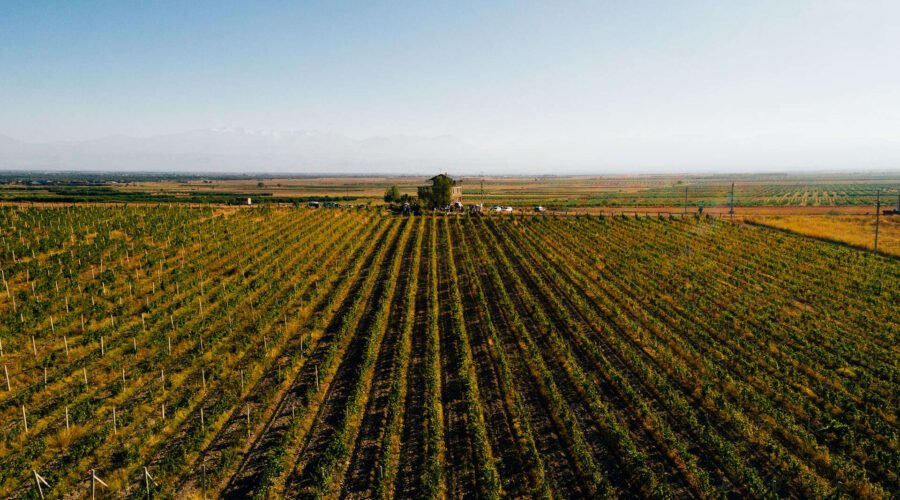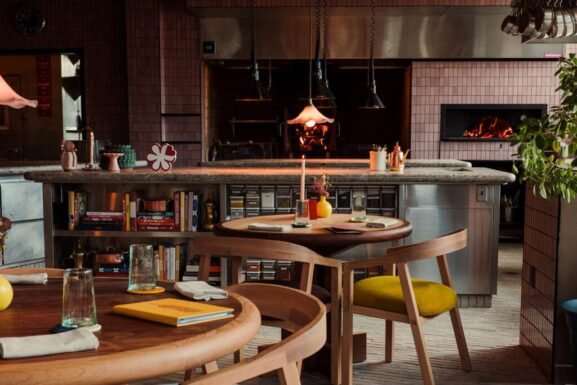The New Era of Armenian Winemaking
While Armenia might be considered a young wine region, the country has some of the oldest winemaking traditions.
Findings in the Areni Cave, located in southwestern Armenia, suggest that the country’s winemaking industry may be more than 6,000 years old. Excavations in Karmir Blur, also known as Red Hill, in the capital of Yerevan reveal carbonized grape seeds and vessels for storing wine called pithoi-karases that date back to 7th century B.C.E. Today, the Erebuni Historical and Archaeological Museum continues to excavate and shed light on Armenia’s winemaking past.
But the Armenian genocide of 1915 and the formation of the Soviet Socialist Republic of Armenia in 1922 interrupted the culture’s longstanding winemaking tradition. During the 70 years under Soviet rule, 95% of grapes grown in Armenia were used for fortified wines and brandy, according to Viticulture and Winemaking in Armenia by Avag Harutyunyan.
When the Soviet Union collapsed and Armenia gained its independence in 1991, many of the country’s winemakers started to look for their roots and take steps toward reestablishing the country’s wine industry. Here’s a look at three wineries that are pioneering a new history of Armenian winemaking both at home and abroad.
Vayots Dzor, Armenia
According to the family, Maran Winery started in 1828 with the repatriation of founders, Sargis and Maran Harutyunyan, to Armenia from Persia—where their ancestors were forcefully relocated by the order of King Shah Abbas in the 1600s.
They planted a vineyard in Artabuynq, a village hidden in the mountains of Vayots Dzor province in southern Armenia. Later, in 1860 their son Harutyun established the first semi-industrial wine press in the country and expanded what his parents started into a full-fledged winery, naming it Maran as a tribute to his mother.
But in the 1920s as part of the USSR collectivization, Maran became part of the state. The family stopped all operations.
Several decades later, Avag Harutunian, an heir of the Maran family, decided to restore his family’s legacy. And in 1992, he produced the first wine of the reestablished Maran Winery—Noravank, using Armenia’s indigenous Areni grape. Four years later, Maran Winery joined efforts with French-Armenian investors and exported a small quantity of Noravank to France and other countries.
“Maran was the first one promoting the significance of aboriginal varieties as a cornerstone of Armenia’s terroir-based winemaking future,” says Frunz Harutunian, who oversees winemaking operations.
Avag Harutunian is still finding new ways to shine the spotlight on Armenia’s indigenous grapes. For instance, its Malahi wines—so-called after an old name of the indigenous grape Areni—blend some of Armenia’s grapes with more common varieties like Malbec and Aligoté. And in 2021, the Harutunian family was able to obtain part of their ancestor’s original vineyard in Artabuynq. They plan on harvesting grapes from it in the coming years.
The winery is also looking to the future and experimenting with growing grapes between 6,725 and 6,791 feet-above sea level to explore growing opportunities in an industry contending with climate change. They say they won’t be using any herbicides, pesticides and synthetic fertilizers in an effort to move towards green agriculture and biodynamic farming.
Ararat Valley, Armenia

Smbat Matevosyan started growing grapes in the Ararat Valley after immigrating from Boston to Armenia after World War I.
But in the 1920s, after the Russian revolution and the reign of Bolsheviks, Matevosyan was arrested. He was an active member of the Armenian Revolutionary Federation (ARF) and when Soviet authorities searched his house they found a photograph of him wearing an ARF pin on his chest. He was taken away and later killed.
But decades later, his heirs discovered documents among his possessions that showed where he had bought the land all those years ago. The Mkrtchyan family—changed from the original Matevosyan, to avoid further persecution—visited the village in 2009 and found Smbat’s original 54-acre vineyard. The family was able to buy some land back and establish a winery. The name, Voskeni, is a combination of Armenia’s indigenous varietals: Voskehat and Areni.
Today, Voskeni Wines produces 150,000 bottles per year, with eight types of wines being exported to Baltic countries, Germany, Netherlands, Austria, the U.S. and Russia.
“When we first started to cultivate vineyards here, 95% of the valley was focused on growing grapes for brandy production,” says Ararat Mkrtchyan, co-founder of Voskeni Wines. “Now all the surrounding villages are actively switching to winemaking instead of distilling. Moreover, Voskeni is a local educational center where young and talented people are being introduced to winemaking.”
Every year, students aged 16 and older from the nearby villages can start working in the vineyard and are introduced to winery operations. At the end of the program, one or two students are offered a full-time job.
Today, you can recognize Voskeni Wines by the label—the last-known picture of Smbat.
Napa Valley
Some 7,000 miles from Armenia, winemaker Ardash Agajanian started his own vine-growing legacy in California in 1914. After escaping the genocide, Ardash Agajanian was hired to work at Mission Bell Winery, an Armenian-owned operation in Madera, California.
Eight years later, he bought his own land, planting 40 acres of wine grapes, raisin grapes, fruits and walnuts. His grandson, Gary Agajanian, later bought another plot and continued the family’s legacy by growing grapes to make wine at Agajanian Vineyards and Wine Company.
In his first vineyard, the younger Agajanian planted a Zinfandel block—which he named Moush Zinfandel, after the city in Armenia—and produced his first wine in 1998. The label featured his father’s painting of a sailing ship, representing the family’s journey and hardship. The bottle scored 88 points from Wine Enthusiast, convincing him to expand the family business.
Today, Agajanian and his team are eager to contribute to the Armenian winemaking conversation and shed a spotlight on the culture’s winemaking heritage. To that end, they’re currently experimenting with growing native Armenian varieties such as Tozot, Khndoghni, Haghtanak and Voskehat, among others. They plan on presenting wines made with these grapes to the U.S. market in the upcoming years.
“The wisdom passed down from my grandfather, through my father, is a legacy of honoring our creator and family,” explains Agajanian. Through it all, he’s reminded of three things that he believes define Armenian winemaking. “Strong work ethic, traditions and innovation,” he says.




